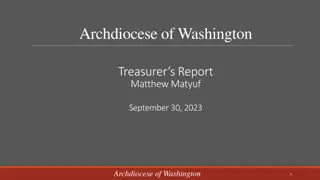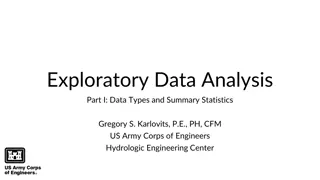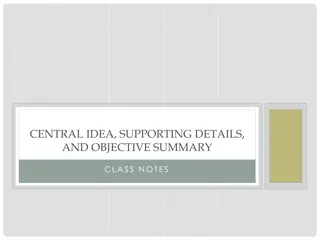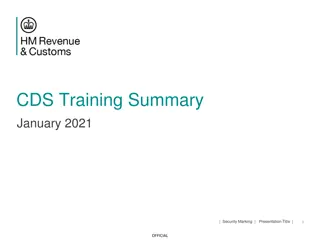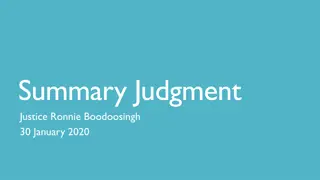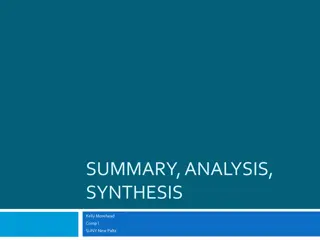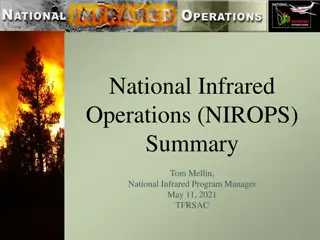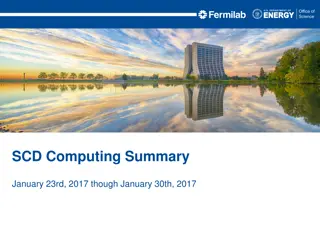The Logic of Quantified Statements
Predicates and quantified statements play a crucial role in logic. A predicate is a sentence containing variables that becomes a statement when specific values are assigned. Universal and existential quantifiers help in forming statements based on conditions. Negation of quantified statements, multiple quantifiers, and arguments with quantified statements are also discussed. Theorems on negating universal and existential statements are highlighted.
Download Presentation

Please find below an Image/Link to download the presentation.
The content on the website is provided AS IS for your information and personal use only. It may not be sold, licensed, or shared on other websites without obtaining consent from the author.If you encounter any issues during the download, it is possible that the publisher has removed the file from their server.
You are allowed to download the files provided on this website for personal or commercial use, subject to the condition that they are used lawfully. All files are the property of their respective owners.
The content on the website is provided AS IS for your information and personal use only. It may not be sold, licensed, or shared on other websites without obtaining consent from the author.
E N D
Presentation Transcript
3. The Logic of Quantified Statements Summary Aaron Tan 27 31 August 2018 1
Summary 3. The Logic of Quantified Statements 3.1 Predicates and Quantified Statements I Predicate; domain; truth set Universal quantifier , existential quantifier Universal conditional statements; Implicit quantification 3.2 Predicates and Quantified Statements II Negation of quantified statements; negation of universal conditional statements Vacuous truth of universal statements Variants of universal conditional statements (contrapositive, converse, inverse) Necessary and sufficient conditions, only if 3.3 Statements with Multiple Quantifiers Negations of multiply-quantified statements; order of quantifiers Prolog 3.4 Arguments with Quantified Statements Universal instantiation; universal modus ponens; universal modus tollens 2
Summary 3.1 Predicates and Quantified Statements I Definition 3.1.1 (Predicate) A predicate is a sentence that contains a finite number of variables and becomes a statement when specific values are substituted for the variables. The domain of a predicate variable is the set of all values that may be substituted in place of the variable. Definition 3.1.2 (Truth set) If P(x) is a predicate and x has domain D, the truth set is the set of all elements of D that make P(x) true when they are substituted for x. The truth set of P(x) is denoted {x D | P(x)}. Definition 3.1.3 (Universal Statement) Let Q(x) be a predicate and D the domain of x. A universal statementis a statement of the form x D, Q(x) . It is defined to be true iff Q(x) is true for every x in D. It is defined to be false iff Q(x) is false for at least one x in D. A value for x for which Q(x) is false is called a counterexample. 3
Summary 3.1 Predicates and Quantified Statements I Definition 3.1.4 (Existential Statement) Let Q(x) be a predicate and D the domain of x. An existential statementis a statement of the form x D such that Q(x) . It is defined to be true iff Q(x) is true for at least one x in D. It is defined to be false iff Q(x) is false for all x in D. ! is the uniqueness quantifier symbol. It means there exists a unique or there is one and only one . Notation Let P(x) and Q(x) be predicates and suppose the common domain of x is D. The notation P(x) Q(x) means that every element in the truth set of P(x) is in the truth set of Q(x), or, equivalently, x, P(x) Q(x). The notation P(x) Q(x) means that P(x) and Q(x) have identical truth sets, or, equivalently, x, P(x) Q(x). 4
Summary 3.2 Predicates and Quantified Statements II Theorem 3.2.1 Negation of a Universal Statement The negation of a statement of the form x in D, P(x) is logically equivalent to a statement of the form x in D such that ~P(x) Symbolically, ~( x in D, P(x)) x in D such that ~P(x) Theorem 3.2.2 Negation of an Existential Statement The negation of a statement of the form x in D such that P(x) is logically equivalent to a statement of the form x in D, ~P(x) Symbolically, ~( x in D such that P(x)) x in D, ~P(x) 5
Summary 3.2 Predicates and Quantified Statements II Definition 3.2.1 (Contrapositive, converse, inverse) Consider a statement of the form: x D, if P(x) then Q(x). 1. Its contrapositive is: x D, if ~Q(x) then ~P(x). 2. Its converse is: x D, if Q(x) then P(x). 3. Its inverse is: x D, if ~P(x) then ~Q(x). Definition 3.2.2 (Necessary and Sufficient conditions, Only if) x, r(x) is a sufficient condition for s(x) means x, if r(x) then s(x) . x, r(x) is a necessary condition for s(x) means x, if ~r(x) then ~s(x) or, equivalently, x, if s(x) then r(x) . x, r(x) only ifs(x) means x, if ~s(x) then ~r(x) or, equivalently, x, if r(x) then s(x) . 6
Summary 3.4 Arguments with Quantified Statements Universal Modus Ponens x, if P(x) then Q(x). P(a) for a particular a. Q(a). Formal version Informal version If x makes P(x) true, then x makes Q(x) true. a makes P(x) true. a makes Q(x) true. Universal Modus Tollens x, if P(x) then Q(x). ~Q(a) for a particular a. ~P(a). Formal version Informal version If x makes P(x) true, then x makes Q(x) true. a does not make Q(x) true. a does not makes P(x) true. Definition 3.4.1 (Valid Argument Form) To say that an argument form is valid means the following: No matter what particular predicates are substituted for the predicate symbols in its premises, if the resulting premise statements are all true, then the conclusion is also true. An argument is called valid if, and only if, its form is valid. 7
Summary 3.4 Arguments with Quantified Statements Converse Error (Quantified Form) x, if P(x) then Q(x). Q(a) for a particular a. P(a). Formal version Informal version If x makes P(x) true, then x makes Q(x) true. a makes Q(x) true. a makes P(x) true. Inverse Error (Quantified Form) x, if P(x) then Q(x). ~P(a) for a particular a. ~Q(a). Formal version Informal version If x makes P(x) true, then x makes Q(x) true. a does not make P(x) true. a does not make Q(x) true. 8









